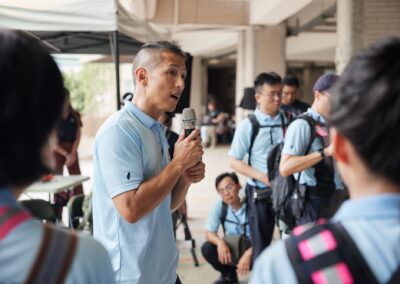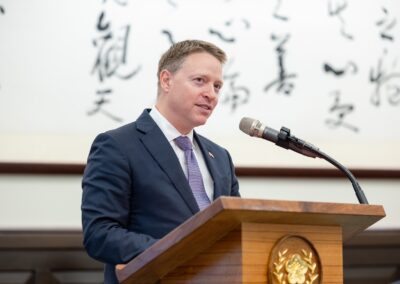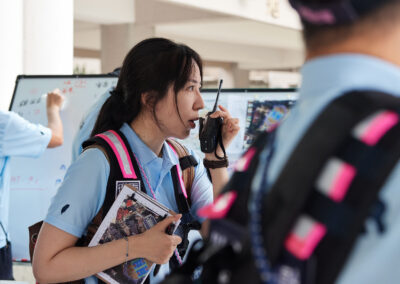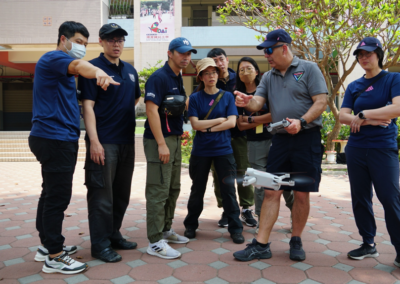Livelihood Opportunities for Philippine Refugees
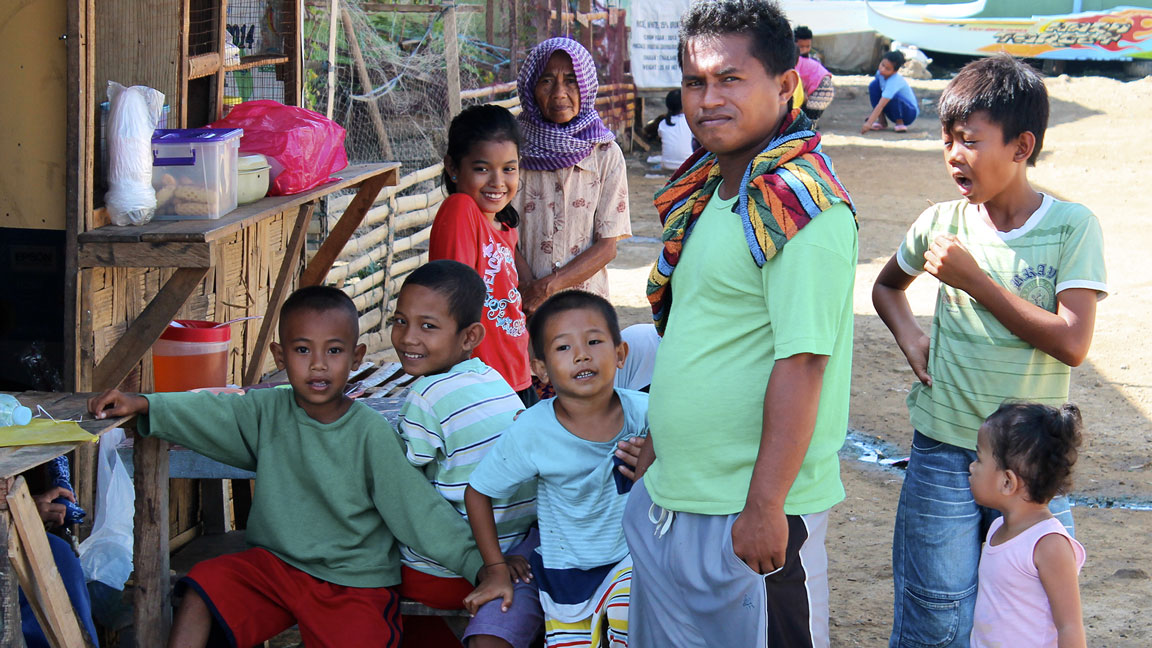
Imagine more than 200 armed fighters marching into your town, taking hostages and using your friends, family and neighbors as human shields. Then imagine this lasting for 19 days, over the course of which 10,000 homes in your city are burned. Some 120,000 Filipinos don’t have to use their imagination; this was their reality during the Zamboanga siege that took place a little more than a year ago. Many of those who fled in search of safety still live in temporary housing or refugee camps because when the siege was over and security forces regained control; there wasn’t anything for them to go back to. I recently returned from a trip to the southern Philippines where I visited one of the refugee camps and had the opportunity to meet many of the refugees and their families. I had traveled there to meet these survivors and see the impact, first hand, of a project Spirit of America funded to improve livelihood opportunities for them.

One of my friends, Austin, whom you might have read about in a previous blog, was recently deployed to the Philippines with a US Army team. Their team had been working to determine the best way to improve economic opportunities for the refugee population in the Taluksangay transient housing site. Austin reached out to me with a plan they developed through collaboration with the residents, the local government and a Civil Military unit from the Philippine military.
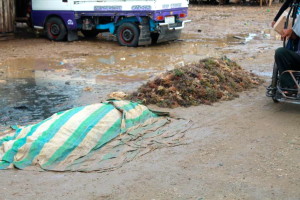 Seaweed farmers do their best to protect their crops when drying them, but because space is limited they are often exposed to rainwater runoff and pollutants.
Seaweed farmers do their best to protect their crops when drying them, but because space is limited they are often exposed to rainwater runoff and pollutants.
During our conversation Austin explained that the majority of the 500 families living in the camp support themselves by take advantage of one of the few livelihood opportunities that exists: seaweed farming. He told me that after the farmers collect the seaweed they spread it out to dry in the sand or on old tarps along the roadway but that this method of drying takes a long time and degrades the quality of the product. What the farmers needed was a place to dry their harvest quickly, efficiently and safely so they could get it to market in a timely manner. A solar drying dock would allow the farmers to dry their harvest in half the time and earn up to ten times what they earn when selling their harvest wet.
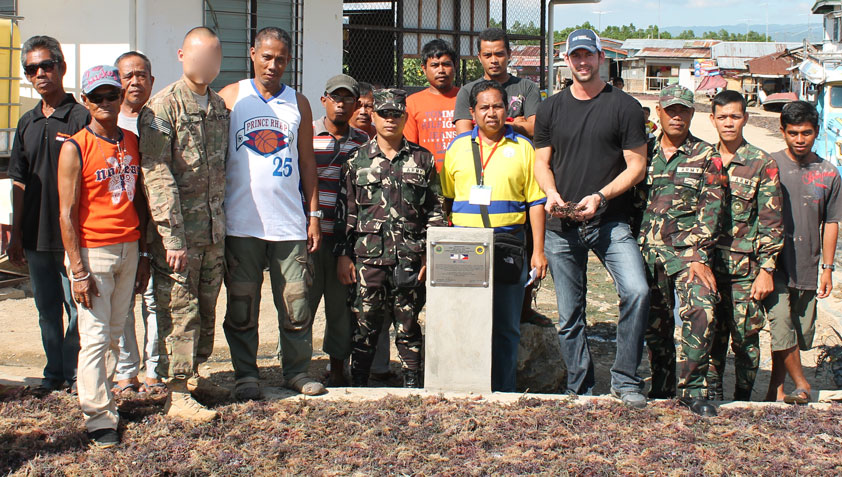 Chris Clary poses next to the completed solar drying dock for a picture with some of the seaweed farmers as well as members of the US and Philippine Army.
Chris Clary poses next to the completed solar drying dock for a picture with some of the seaweed farmers as well as members of the US and Philippine Army.
Austin’s team recognized that criminal and insurgent organizations that exist in the southern Philippines often exploit individual who feel that they are forgotten and that there is no hope of getting out of their challenging financial situations. By providing the right kind of assistance and improving upon the existing economic framework Austin’s team was able to show the residents that they are not forgotten. The drying dock greatly benefited the residents of the camp and will serve as a permanent symbol of cooperation between America, the Philippine Armed Forces, and residents for a long time.
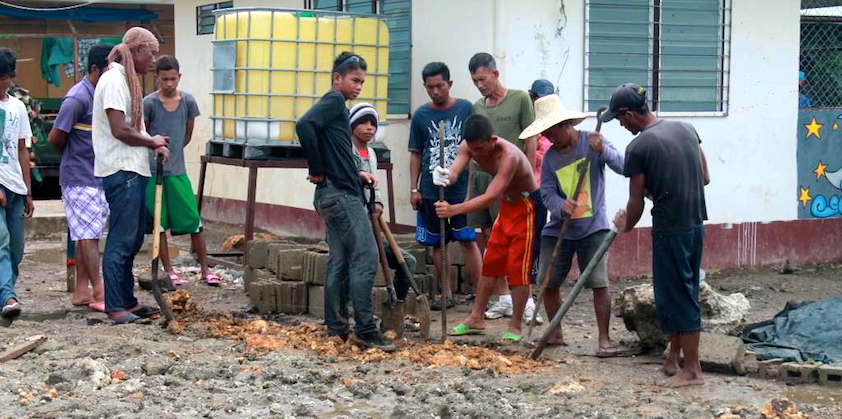 Residents of the Taluksangay camp break ground on the seaweed solar drying dock.
Residents of the Taluksangay camp break ground on the seaweed solar drying dock.
 The footing for the drying dock can be seen here. There is also progress being made on more permanent housing for the refugee population.
The footing for the drying dock can be seen here. There is also progress being made on more permanent housing for the refugee population.
 Farmers immediately started using the drying dock after it was completed.
Farmers immediately started using the drying dock after it was completed.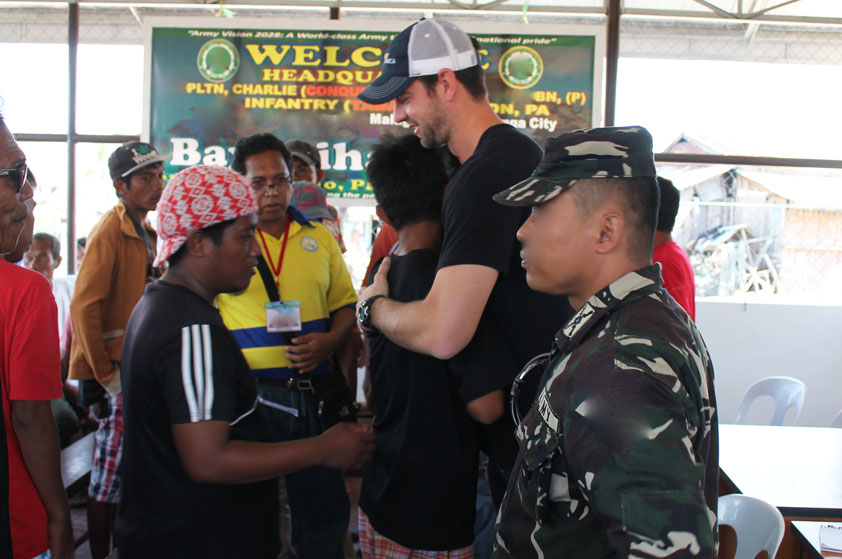 One of the farmers embraces Chris in a gesture of gratitude for visiting the site and providing support.
One of the farmers embraces Chris in a gesture of gratitude for visiting the site and providing support.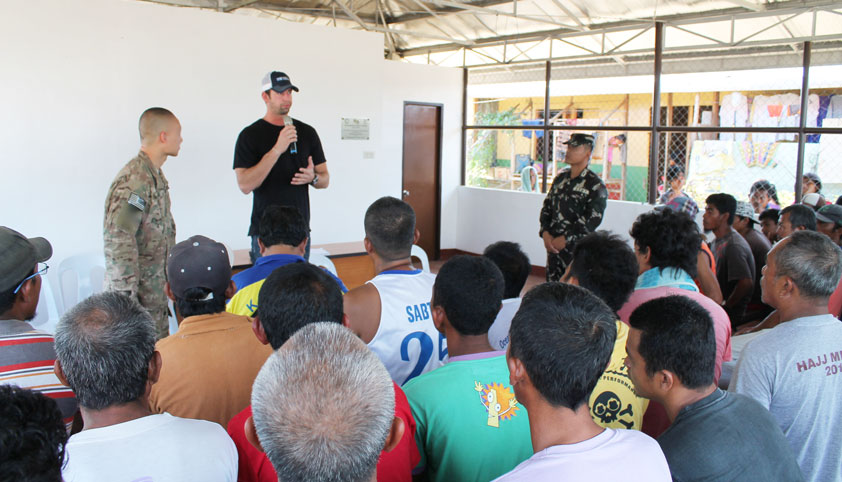 Chris and Austin speaks to a large group of seaweed farmers and explain that funding for the solar drying dock was provided by Americans who care about them and what is going on in the Philippines.
Chris and Austin speaks to a large group of seaweed farmers and explain that funding for the solar drying dock was provided by Americans who care about them and what is going on in the Philippines.
As we traveled through Zamboanga City at the end of my trip, I could still see bullet holes from the siege in the sides of houses and other structures. They are the temporary scars of a violent event that forever changed the lives of so many people in the southern Philippines. There are still needs within the displaced populations and I am in communication with the teams to determine what those are and how we can best assist them in finding solutions. I fully understand that no amount of aid can ever erase the events of the past, but I believe that the right kind of assistance can help get those who have suffered back on track to a brighter future.
Without the hard work of the US military teams, Philippine military, and local leaders this project wouldn’t have happened. To everyone who contributed, Thank You! And to our donors, thank you for supporting our work with deployed troops who are assisting some of the least fortunate members of Philippine society and others around the world who have been negatively impacted by ongoing conflicts.
Chris Clary
Field Operations Project Manager

